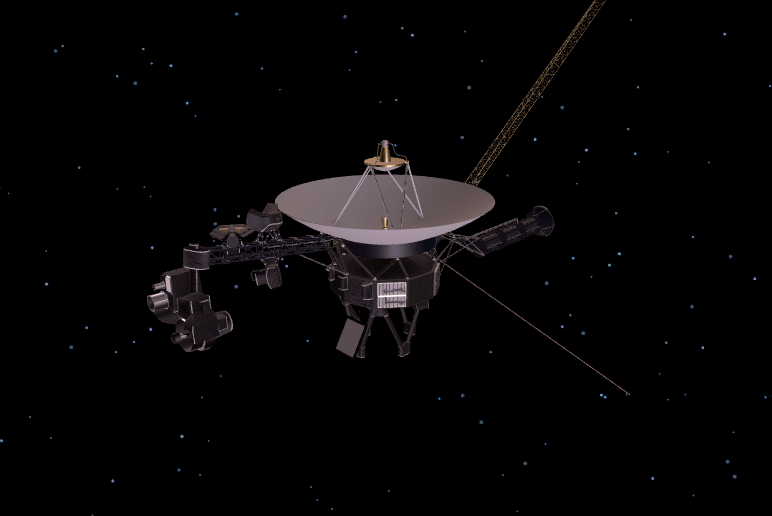NASA’s Voyager 1 and Voyager 2 spacecraft have been cruising through space since 1977. For the past forty years or so they’ve been speeding along at a clip of over 30,000 miles per hour, and while Voyager 1 has been in what is considered interstellar space — that is, outside the Solar System — for a little while now, Voyager 2 is only just approaching that incredible milestone.
In a new update, NASA’s Jet Propulsion Laboratory explains that Voyager 2 recently sent back data that suggested it was being bombarded with more cosmic rays than it was used to. This is the same thing that happened to Voyager 1 when it finally broke out of our system’s heliosphere, which is the “vast bubble around the sun and planets dominated by solar material and magnetic fields,” according to NASA.
The data is a very strong hint that Voyager 2 is finally busting out of the Solar System once and for all, but NASA is quick to point out that it’s not a sure thing just yet.
Voyager team members note that the increase in cosmic rays is not a definitive sign that the probe is about to cross the heliopause. Voyager 2 is in a different location in the heliosheath — the outer region of the heliosphere — than Voyager 1 had been, and possible differences in these locations means Voyager 2 may experience a different exit timeline than Voyager 1.
Voyager 1 and Voyager 2 aren’t traveling in exactly the same direction, so it’s been difficult for NASA to predict when each spacecraft would officially being an interstellar journey in relation to the other. For now, the Voyager team is keeping a close eye on the data in hopes of confirming that Voyager 2 has reached the heliopause, which is the boundary where the Solar System essentially “ends.”
“We’re seeing a change in the environment around Voyager 2, there’s no doubt about that,” Voyager Project Scientist Ed Stone said in a statement. “We’re going to learn a lot in the coming months, but we still don’t know when we’ll reach the heliopause. We’re not there yet — that’s one thing I can say with confidence.”








